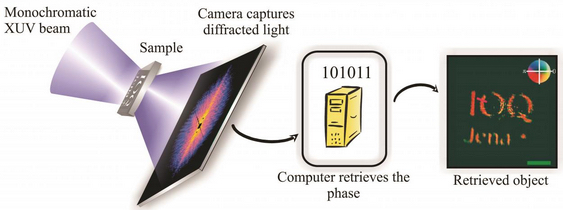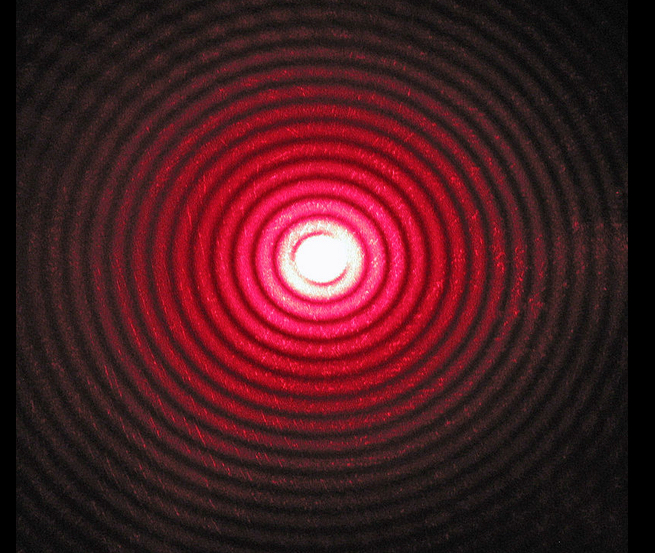Pushing the resolution and exposure-time limits of lensless imaging
September 25, 2015

With “coherent diffraction imaging,” extreme ultraviolet light scatters off a sample and produces a diffraction pattern, which a computer then analyzes to reconstruct an image of the target material (credit: Dr. Michael Zürch, Friedrich Schiller University Jena, Germany)
Physicists at Friedrich Schiller University in Germany are pushing the boundaries of nanoscale imaging by shooting ultra-high-resolution, real-time images in extreme ultraviolet light — without lenses. The new method could be used to study everything from semiconductor chips to cancer cells, the scientists say.
They are improving a lensless imaging technique called “coherent diffraction imaging,” which has been around since the 1980s. To take a picture with this method, scientists fire an extreme ultraviolet laser or X-ray at a target. The light scatters off, and some of those photons interfere with one another and find their way onto a detector, creating a diffraction pattern.

Diffraction pattern of red laser beam (credit: Wisky/Wikipedia)
By analyzing that pattern, a computer then reconstructs the path those photons must have taken, which generates an image of the target material.
But the quality of the images depends on the radiation source. Traditionally, researchers have used big, powerful X-ray beams like the one at the SLAC National Accelerator Laboratory, which can pump out lots of photons.
To make the process more accessible, researchers have developed smaller machines using coherent laser-like beams, which are cheaper but produce lower-quality images and require short focal lengths (similar to placing a specimen close to a microscope to boost the magnification) and long exposure times.
As in conventional photography, that rules out large, real-time images.
Now, Michael Zürch and his research team have built an ultrafast laser that fires extreme UV photons 100 times faster than previous table-top machines and is able to snap an image at a resolution of 26 nanometers (the size of a blackline walnut virus) — almost the theoretical diffraction limit for the 33-nanometers UV light used. They were also able to get real-time images at a rate of one per second at the reduced resolution of 80 nanometers.
The prospect of high-resolution, real-time imaging using a relatively low-cost, small setup could lead to all kinds of applications, Zürch said. Engineers could use this to hunt for tiny defects in semiconductor chips. Biologists could zoom in on the organelles that make up a cell. Eventually, he said, the researchers might be able to reach shorter exposure times and higher resolution levels.
The team will present their work at Frontiers in Optics, the Optical Society’s annual meeting and conference in San Jose, California on October 22, 2015.